Loading...
Products
Magic: The Gathering Line
I love writing Yu-Gi-Oh! articles for the Ultimate Guard blog, the only issue is that I will soon run out of topics as I don’t play modern Yu-Gi-Oh! But there are plenty of old-school stories that need to be told!
A bit ago, we published an article talking about possibly the most iconic retro format of the game, Goat Format. This time, we are going to cover what is possibly the most popular and fun old-school format in Yu-Gi-Oh!, one that has been gaining a lot of traction over the past few years: Edison.
Edison Format is a Yu-Gi-Oh! retro format that covers the metagame from the first half of the year of 2010. It is well-known for featuring very powerful synchro monsters that define the outcome of the games. Some of the most popular decks are Blackwing, Vayu Turbo, Monarchs, Lightsworns, Machina and much more.
When I first heard the term "Edison", I was wonderingif it had anything to do with the inventor, perhaps a reference to the format being mentally challenging and rewarding creativity—and I was almost a bit disappointed when I found out that this wasn't the case.
The origins of the name are more straightforward: Almost 15 years ago, one of the biggest tournaments to date took place in Edison, New Jersey. Over time, this event became the focal point of reference for the format and players ended up adopting its name to refer to it.
Nevertheless I do think that Edision is a very diverse format with lots of room to create surprise strategies, so perhaps in the subconsciousness of the Yu-Gi-Oh! community, Thomas Edison was thought about at to some degree ...
When talking about retro formats in general, the answer is pretty obvious: nostalgia! There are many players (like me) that used to play a game and have great memories of the past, but don’t play anymore. I am sure you know someone who has played a TCG for some time, only to leave and then come back again. That is actually the norm—but the thing about Yu-Gi-Oh! is the difficult (re-)entry barrier.
First of all, there is the financial aspect. In games with competitive formats like Yu-Gi-Oh! (or Magic: The Gathering, for example), you are required to invest a lot of money if you want to play a top tier deck. That is something that returning players oftentimes do not want or simply cannot always afford. And even having the necessary budget: Knowing that the meta game evolves fast and requires you to keep spending a lot is not very inviting. The second huge barrier for returning players: the game is completely different nowadays! I have already written about this in a previous article. Please don’t get me wrong: Yu-Gi-Oh! is clearly thriving! In fact, last weekend the biggest YCS with 8.000 players took place in Tokyo. But if I ever decide to play Yu-Gi-Oh! again, I will do so knowing that the pace has sped up significantly and that the back-and-forth game I played back then is gone.
This is why some die-hard Yu-Gi-Oh! players still resort to playing retro formats. And Edison is the perfect middle ground between a very slow format with a very limited card pool (Goat) and the modern fast Yu-Gi-Oh!, where combo options and deck styles are almost endless.
And if you ask me personally, there is another reason for Edison’s popularity … card games on motorcycles!
Ok, maybe this sounds strange, but hear me out: I am sure that you, dear reader, are familiar with the Yu-Gi-Oh! anime series. In fact, the game's success would have never been possible without the popularity of the show that, after starting as a generic "games and puzzles" series, evolved to be solely centered around card duels. The first Yu-Gi-Oh! anime era ended when Yugi and his friends saved the world and parted ways with the Pharaoh. After that, the GX anime started which was neither as successful nor as well remembered. I think that the goofy tone didn’t help connecting with an audience that was getting older.
The start of the third era was accompanied by uncertainty. It was clear that the game needed an evolution after many years with the exact same rules and card types, but the creators had to do it in a way that would still draw people to the game. And guess what? They nailed it.
5DS is the name of the third anime era (or "arch"), which featured new main characters and introduced some of the most iconic cards in the game's history. The anime was pretty good (I have to confess that it is my favorite), Yusei made great protagonists and, to add even more epicity to the story, the duelists battled each other while riding motorcycles. In fact, sometimes, the more they accelerated, the more powerful their cards became. I know that sounds silly, but we are talking about an anime here, so come on!
The series started to gain attention from lots of people, and believe me: Once you finished a couple of episodes all you wanted to do was building a deck on your own. Soon, players started referring to the series' leitmotif as—literally—cards games on motorcycles.
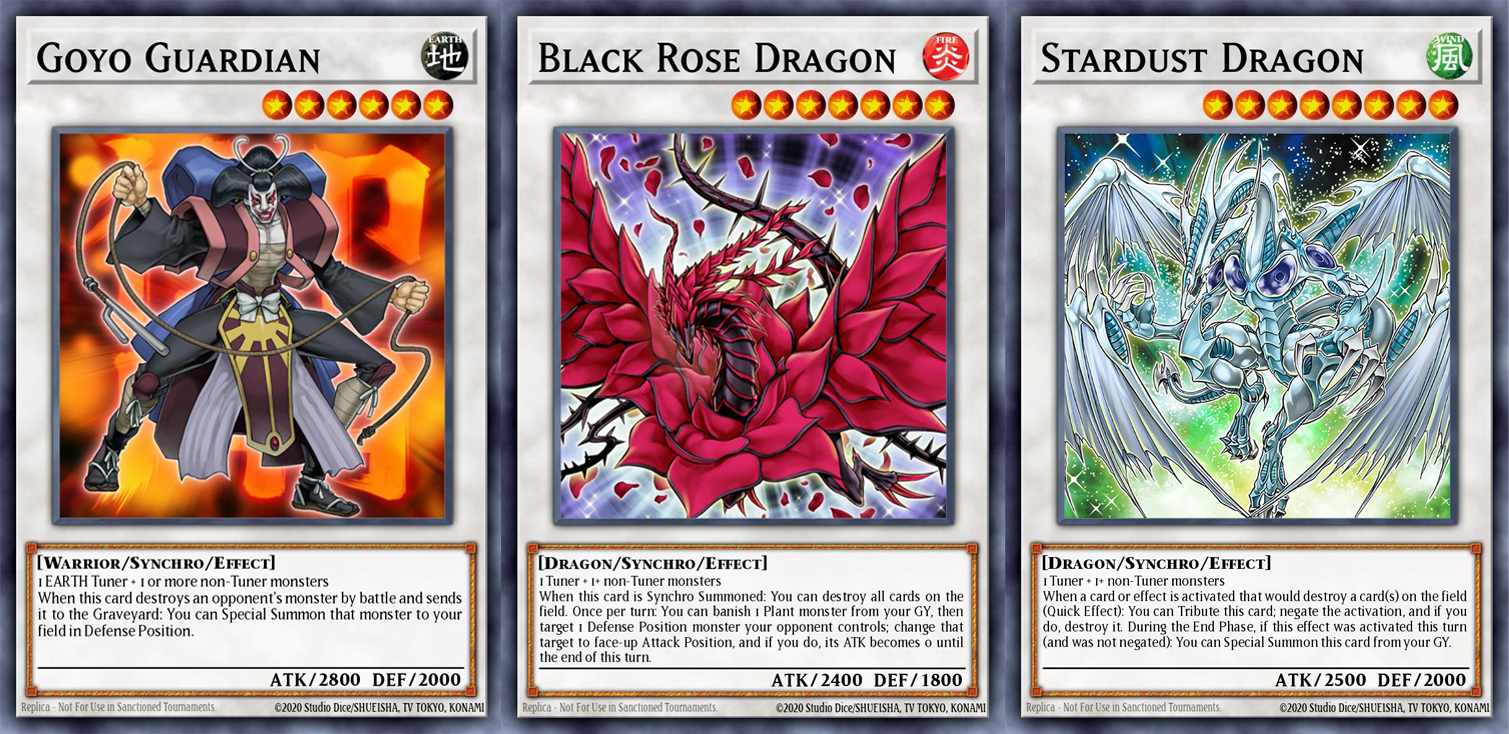
Apart from the new characters and their stories, another great thing that Konami introduced were the never before seen synchro monsters. These stylish-looking cards were completely white and could be special summoned by "synchoing" one turner monster and a non-turner one and they immediately took over the game. In fact, there were decks that purely revolved around summoning powerful synchro monsters to win the game. And how incredible they were! Stardust Dragon prevented cards being destroyed, Black Rose Dragon whipped the entire field when summoned and Goyo Guardian stole opponent’s monsters, just to name a few. This first badge of synchro monsters was possibly the most powerful in Yu-Gi-Oh!'s history.
Ok, so now that we have talked about the defining synchro monsters, it is time to introduce you to some of the most powerful decks in the format. Something I need to mention here is that I might be leaving some important decks out, but just because Edison is so diverse that it's almost impossible to cover everything. Every tournament is different and shaped by the local people.
There are a couple of decks though that are consistently responsible for great results in tournaments:
This deck became incredibly popular and eventually caused Royal Oppression to get banned from the format because of how unfair it can be. It is the perfect combination of control and big hitters. The name of the deck comes from the blackwing card Vayu, the Emblem of Honor, which allows the player to synchro summon by removing cards from the graveyard. In the first few turns, you aim to send a lot of cards to the graveyard with monsters like Ryko, Lightsworn Hunter and get rid of some monsters from your opponent. The deck can also control the board very efficiently because Royal Oppression prevents monsters from being special summoned, which is key for a number of strategies—but the trick here is that it doesn’t affect yourself, as Vayu’s effect cannot be negated. What often ends up happening is that your opponent can’t keep up with all the monsters you are able to put into the field.
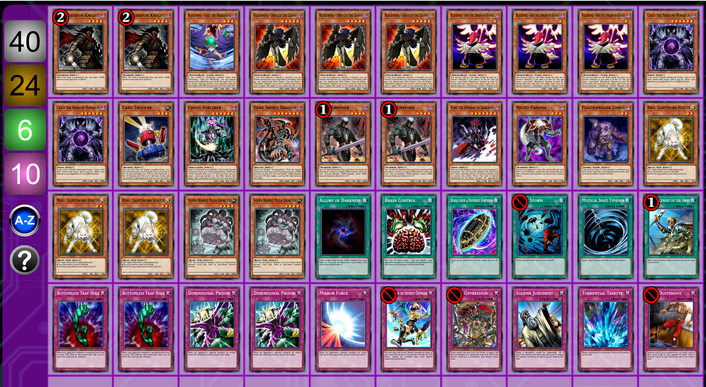
That is my favorite Yu-Gi-Oh! deck ever and the only one I play when I go to Edison tournaments. I think it is a really solid deck, even if sometimes you need to open with monster cards in your hand. The deck is very mid-range in the sense that it can play aggressively and summon a lot of monsters, be a bit more defensively with Icarus Attack, or simply smash everything on the field with powerful synchro monsters. And if you go against them, don’t forget that Kalut - the Moon Shadow is always lurking in hand, ready to be activated during the damage step.
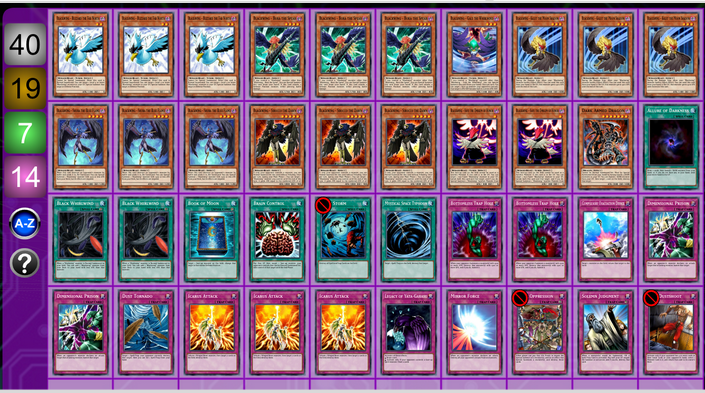
Another really cool deck, even if it's a bit pricey due to Substitoad having only had one reprint ever! The idea is very straightforward: send your Treeborn Frog to the graveyard and have infinite tribute resources to summon your Monarchs (Caius, Raiza, …), which are monsters that can whip everything off the field. It is often combined with Heroes, so that they can leverage the effect of Miracle Fusion.
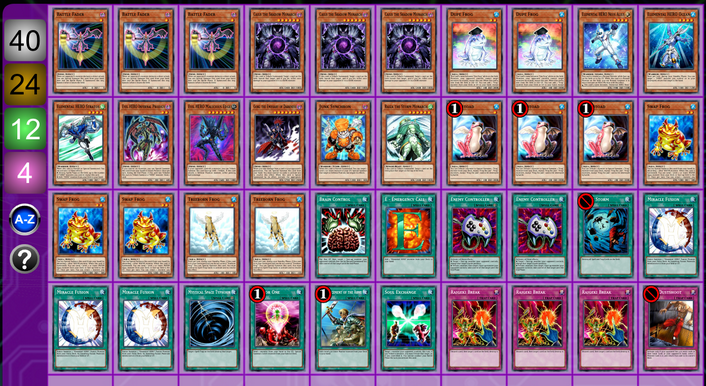
There are many ways to approach this strategy, as you can use different engines and partners like Frogs, Destiny Heros, or Deep Sea Diva. For the more control-oriented versions with Thunder King Rai-Oh as well as the more combo-oriented ones, the idea is to leverage the absolute power of Absolute Zero (pun intended) and put your opponent in a very difficult situation if they want to get over him.
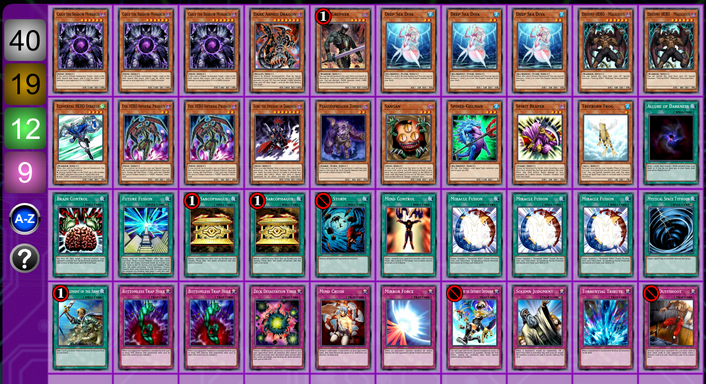
A deck that became popular recently and literally relies on the idea of swarming the field with very high-level attackers and winning by pure aggression. Red-Eyes Darkness Metal Dragon is a fantastic boss monster that can bring Dragons from the graveyard again and again ... and Koa´ki Meiru Drago can shut down entire strategies. All of this while Snowman Eater buys you very important turns.
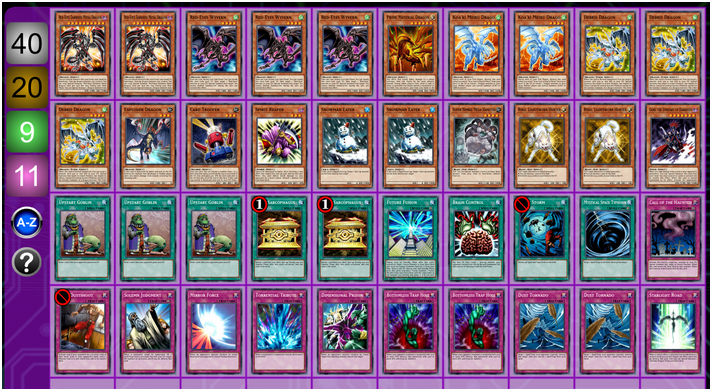
This may not be the most powerful deck in the format, but it is just so iconic that I couldn’t help myself. I guess that Lightsworns is not played more often is just because there are a lot of inconsistencies with it. Lightsworns is a deck that has to mill cards in order to get effects activated, but there is no way for you to control the cards you are milling, and at some point it just feels like gambling. Sure, it can beat everything ... but it can also brick very hard. In any case, Judgement Dragon is one of the most unfair cards in the entire game.
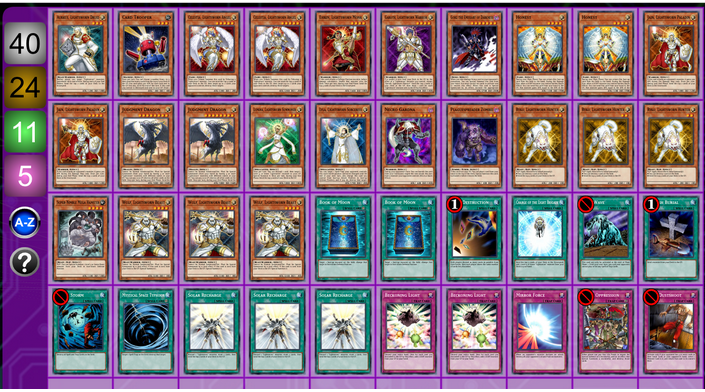
Another big favorite of mine, even if they sometimes can struggle against control decks. The idea is to fill the graveyard with darkness-type zombies and win by swarming the field with synchro monsters. Mezuki or Zombie Master are your combo-enablers and Plagespread Zombie your tuner of choice.
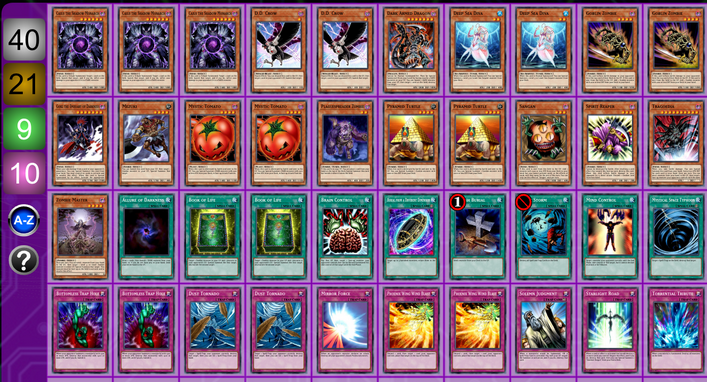
In case you are interested in seeing more strategies, results and events, I highly recommend you check this page!
Because I don’t play competitively and do most of my testing at home, I have like 10 decks ready to go, separated by sleeve colors: Blue is Blackwing, Black is Turbo Vayu, and so on! I definitely recommend you Cortex Sleeves and Katana Sleeves for when you go to the big tournaments!
I know this might sound biase, but: a lot of fun and diverse decks! The good thing about retro formats is that people tend to adopt a more casual approach and it is very rare that you are going to find yourself in high-pressure tournament situations where money is involved. If you do want that though, remember that Edison and Goat are officially recognized by Konami and that you can play side events and win exclusive prizes if you join the Time Wizard format tournaments in the big YCS, for example.
And in case you are wondering: No, the format is not super expensive in general, but of course that also depends on the type of deck you go for. If you decide to build a Machina Gadget or Dragons (which are ideal for beginners!) it will not cost you more than 30€. In case you want to build a full-rarity Monarch deck with 1st edition cards though, I don’t even want to do the math ...
In conclusion, playing the Edison format is a very rewarding experience and you should give it a try in case you love retro formats and think that Goat format is a bit too slow for you.